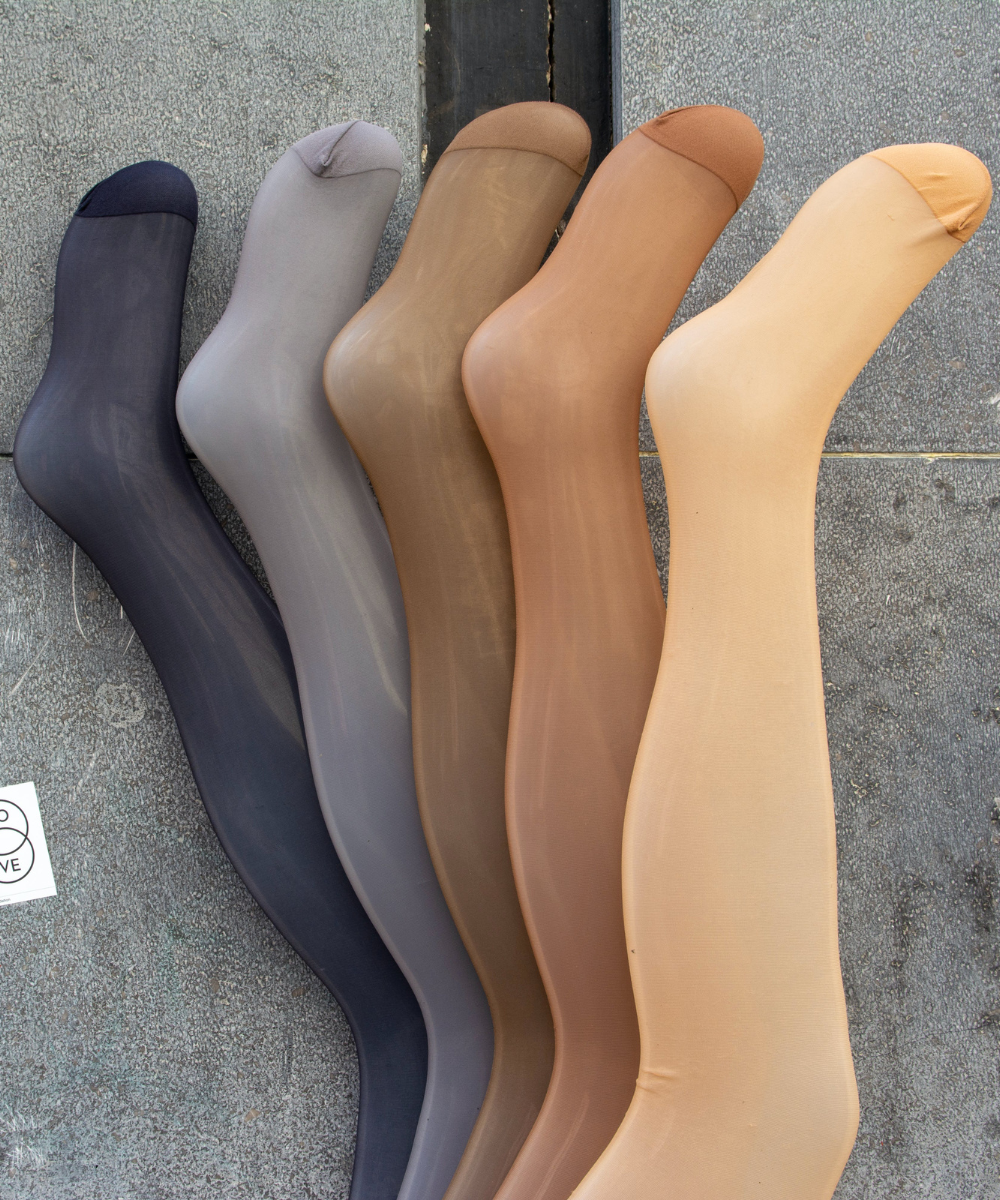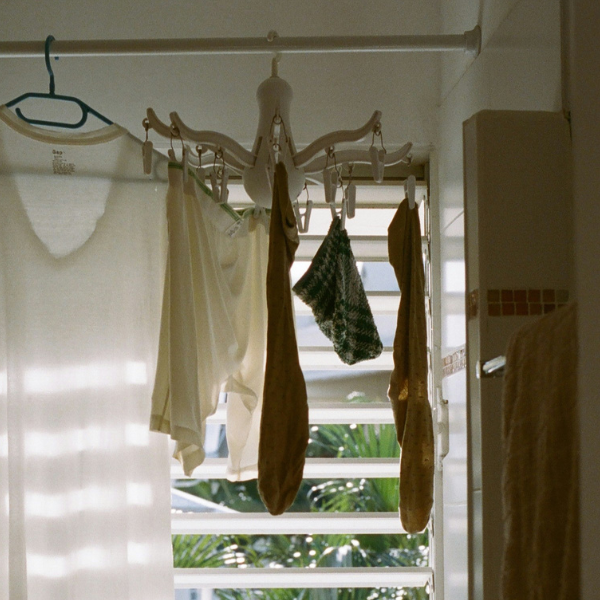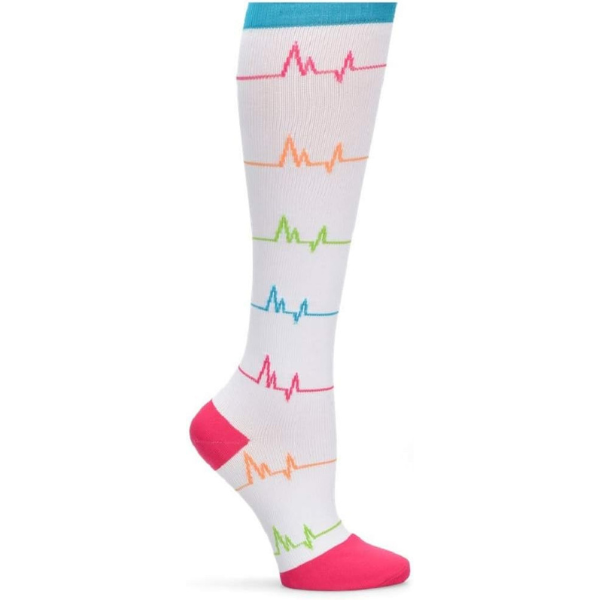Compression Socks for Nurses: Are You Caring For Your Legs?

Are you wearing compression socks at work? I know what you are thinking...my legs are fine. I just made sure the lady down the hall had hers on, but I don't need compression socks yet.
Anyone working long shifts on their feet can benefit from compression socks. Wearing them now can even help prevent bigger problems later on in your life. Give them a try - you might find your legs needed the support more than you realized!
Looking for the perfect pair of compression socks to provide comfort and support during long shifts? Look no further! In this blog post, we will guide you through everything you need to know about compression socks for nurses, from understanding their importance to finding the best brands and styles. Let’s get started!
Key Takeaways
- Compression socks are a must-have for nurses, providing health benefits and comfort during long shifts.
- Choose the appropriate compression level to maximize support and comfort while selecting from top brands & styles of compression socks.
- Proper care will keep your compression socks from shrinking and helps them last longer.
- Enhance your nursing experience with fun colors and patterned designs!
They Aren't Just For the Elderly! Understanding the Importance of Compression Socks for Nurses

As a nurse, spending long hours on your feet, taking care of your legs and feet becomes imperative. Ask a runner - they will tell you the benefits of compression for active people that spend a lot of time on their feet.
Compression socks are a game-changer for nurses, providing constant support, reducing discomfort, improving lymphatic drainage, and enhancing circulation in the legs. Healthcare professionals highly recommend people who spend long hours on their feet or are prone to swelling in their feet and ankles wear compression socks for optimal health and well-being.
Let’s understand the benefits of wearing compression socks and their impact on nurses.
Benefits of Wearing Compression Socks
Compression socks work wonders for nurses who spend long shifts on their feet, especially those suffering from severe varicose veins. They offer support to your ankles and calves, helping to reduce swelling and inflammation, to relieve pain and discomfort. Compression socks also aid in improving venous return and lymphatic drainage, pushing blood and lymph away from your lower legs, reducing the risk of deep vein thrombosis. The result? Happier, healthier legs and feet even after grueling shifts, alleviating those tired legs!
Graduated compression levels in socks promote blood flow and reduce the chance of blood clots, making them a lifesaver for nurses who are constantly on the move, and prevent damage to your circulation over years of working on your feet..
Healthcare Professionals Recommend Them!
Podiatrists and nurses alike advocate for the use of compression socks during long shifts. Some of the benefits that can be gained from wearing compression socks during long shifts include:
- Improved circulation
- Reduced leg fatigue and swelling
- Alleviation of pain and discomfort
- Prevention of injuries
- Improved muscle function
Choosing the Right Compression Level and Fit
Selecting compression socks involves finding a compression level and fit that suit your needs. Graduated compression levels, labeled with mmHg to signify their degree of compression, offer various options. Knowing your ankle circumference, calf circumference, and leg length (for knee-high compression socks) will help you find the perfect fit.
Compression socks should be snug enough to provide gentle support to your legs, but not too tight that it becomes uncomfortable. You should take off compression stockings if you feel any kind of numbness, pinching, loss of circulation or pain. Try using a lower strength compression the next time. Consulting a healthcare professional can help you make the best choice for your specific needs.
Graduated Compression Levels
Graduated compression socks are designed to be tighter around the foot and ankle, and gradually relax as they move up the calf, providing more support lower on the leg. The mmHg labels on compression socks indicate the level of compression they provide, with higher numbers signifying greater compression levels.
Understanding the different compression levels available can help you choose the most suitable option for your needs. Selecting the appropriate level optimizes the support and comfort provided by compression socks, ultimately improving your overall well-being during long nursing shifts.
Sizing and Fit Tips
Proper fit is essential for reaping the full benefits of compression socks. Ensuring the highest pressure is at the ankle, gradually decreasing as it goes up the leg, will help improve blood flow and reduce swelling. Often, you can just buy a pair off the rack, but if they aren't working for you, consider getting a more customized fit. If you have any doubts or concerns about selecting the right compression level and fit, don’t hesitate to consult a healthcare professional for guidance.
A person’s leg shape can also play a role in achieving the ideal fit for compression socks. While most individuals will find a snug, comfortable fit, those with extreme deformity or unusual leg shapes may face challenges in finding the perfect pair. In such cases, seeking professional advice can help ensure you select the best compression socks for your unique needs.
Top Brands of Compression Socks for Nurses
With a multitude of brands and styles available, finding the best compression socks for nurses has never been easier. You can visit their websites, and many offer discounts for nurses. Many are also conveniently offered on Amazon. Some popular brands offering quality compression socks for nurses include:
- Figs
- Nurse Mates
- Bombas
- Poppy Scrubs
- Allheart
Each brand offers unique features, materials, and price points, providing a wide selection to choose from. No matter your preference, you’re sure to find the perfect pair of compression socks to keep your legs and feet feeling great during those long nursing shifts, even if they ask you to stay for a double!
Figs Compression Socks
Figs compression socks combine style and function, offering a variety of colorful options for both tall and ankle-height socks. Made from an incredible blend of 91% Nylon and 9% Elastane, these socks provide a comfortable and supportive fit.
Figs compression socks come in three sizes: Small, Medium, and Large, with a detailed sizing chart available on their website to help you find the perfect fit. With prices ranging from $12 to $28, Figs offers high-quality compression socks at an affordable price point.
Nurse Mates Compression Socks
Nurse Mates compression socks (available on Amazon) are designed with both comfort and fashion in mind. Crafted with the highest quality materials, including spandex, nylon, and soft fabric, these socks provide an incredibly comfortable and supportive experience.
Nurse Mates offers a variety of compression levels to choose from, including:
- Mild compression (8-15 mmHg)
- Moderate compression (15-20 mmHg)
- Firm compression (20-30 mmHg)
- Extra firm compression (30-40 mmHg)
This ensures you find the perfect fit for your needs. With a wide range of prices, Nurse Mates has something for every nurse looking for stylish and functional compression socks.
Other Notable Brands
There are other notable brands offering outstanding quality compression socks for nurses. Bombas, Poppy Scrubs, and Allheart provide a variety of stylish and functional options to keep you comfortable and supported during long shifts.
These brands offer a range of prices, from as low as $10 for Allheart’s compression socks to $27.99 for Bombas compression socks (on Amazon). With such a wide selection of brands, styles, and price points, you’ll have no trouble finding the perfect pair of compression socks for your nursing needs.
Caring for Your Compression Socks

If you have worked in a long-term care facility, you can probably skip this section, because you already know about hand-washing and hang-drying compression stockings.
Appropriate care and maintenance of your compression socks increase their lifespan and maintain their effectiveness. Washing your compression socks by hand or in a washing machine on a gentle cycle with cold water is recommended for optimal results. Using a mild detergent or soap without bleach will help keep your compression socks in top shape.
To ensure your compression socks last longer, avoid tumble drying them. Instead, air dry them by hanging them up or laying them flat on a towel. Following these simple care tips will help you get the most out of your compression socks and keep your legs and feet feeling great.
Machine-Washability
Machine-washable compression socks make caring for your socks a breeze. For the best results, wash your compression socks on a delicate cycle with cold water, separate from heavily soiled items.
Using a mild, bleach-free soap will ensure your socks stay in top condition.
Drying and Storage Tips
Air-drying your compression socks is the most effective way to maintain their longevity and effectiveness. Lay them out flat and let them dry naturally, avoiding dryers unless the manufacturer’s instructions indicate otherwise.
Proper drying and storage methods will help ensure your compression socks continue to provide the support and comfort you need during long nursing shifts.
Cute Compression Socks: Fun Patterns and Designs for Nurses

Want to add a fun and personal touch to your nursing uniform? Consider cute compression socks featuring playful patterns and designs! Medical-themed patterns, vibrant novelty patterns, and designs with stethoscopes or hearts are just a few of the options available.
Adding a touch of personal style to your work attire can uplift your mood and morale, making your workspace more enjoyable and lively.
Fun patterns and prints from various brands are widely available, there’s no shortage of exciting designs to choose from. Even with the strictest of uniform guidelines, usually your sock design choice is one way you can let your creativity shine. Combining style and function, themed compression socks not only look great but also provide the support and comfort you need during long nursing shifts.
Summary
In conclusion, compression socks are an essential part of every nurse’s wardrobe. They provide support, reduce discomfort, improve lymphatic drainage, and enhance circulation, making long shifts more comfortable and productive. They can lessen damage caused by swelling and increased venous insufficiency, helping to prevent problems later on. By choosing the right compression level, fit, and style, you can ensure your legs and feet stay healthy and energized throughout your nursing career. So go ahead and find the perfect pair of compression socks to keep you feeling great, no matter how long the shift!
Discussion
Do you wear compression socks at work?
What are your favorite brands?
